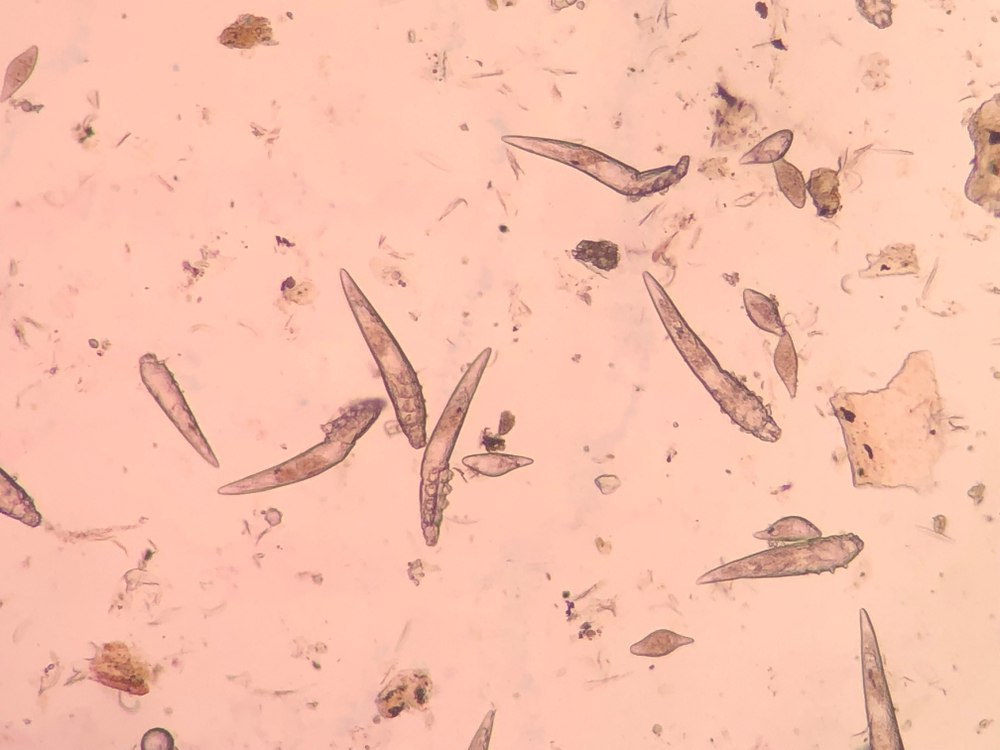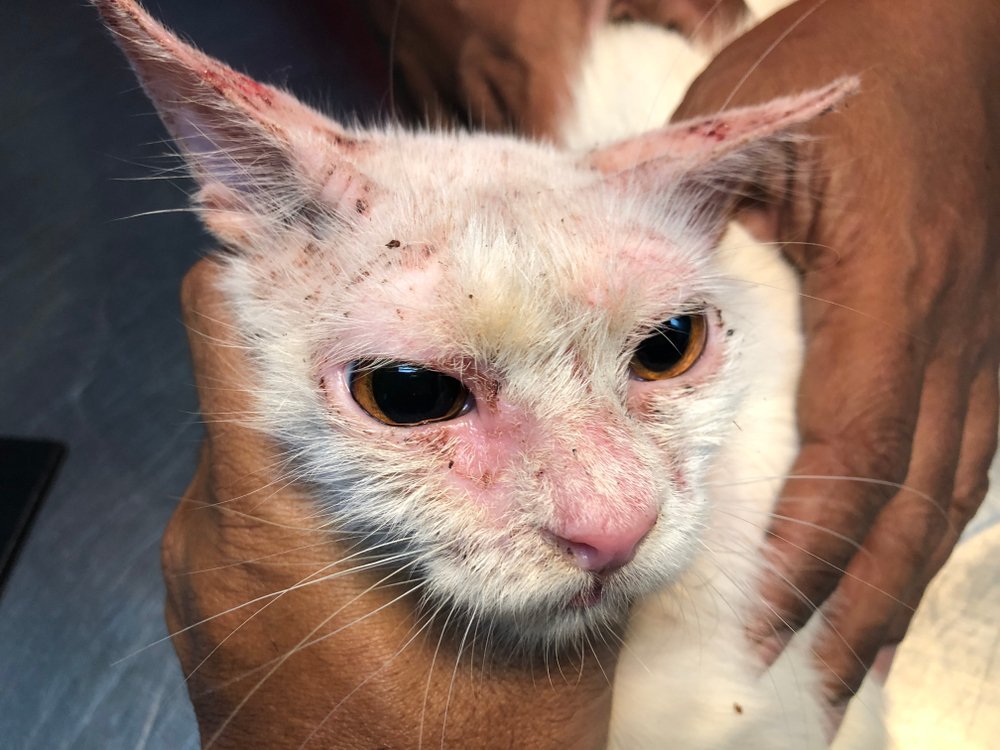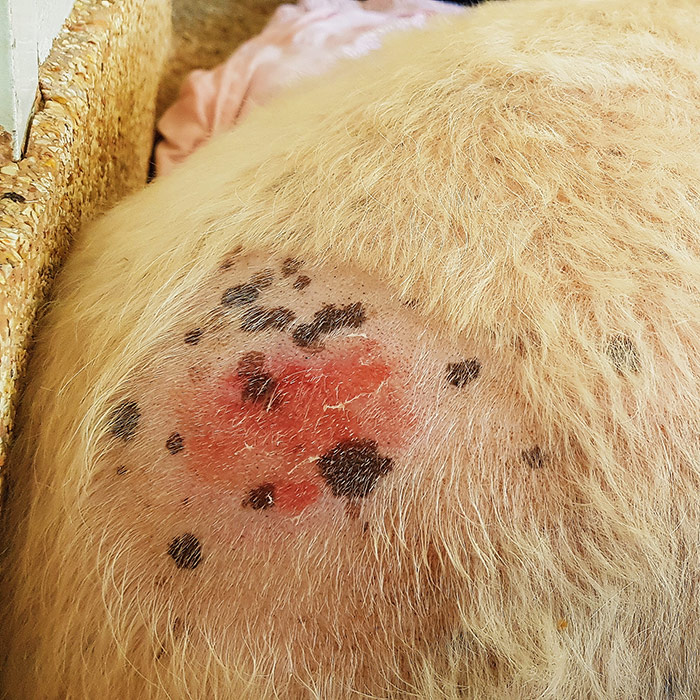Mange in dogs and cats
What is mange?
Mange or demodex is an irritating skin disease, caused by parasitic mites, that is common in both cats and dogs. Mange is also common amongst livestock suck as sheep or cattle and wild animals.
The mites embed themselves into the skin or hair follicles of the animal and burrow deep inside. The condition is very common because the mites will often be present on the animal from a period shortly after birth. Mange will only become a visible problem in the case that your pet’s immune system is weak or doesn’t function properly. In this instance, the mite population may not be controlled and severe rashes, lesions and loss of hair can result.

The demodex mites are long and thin, shaped like a cigar. Only tiny in size and equipped with eight legs, the mites attach themselves to hair follicles and burrow into the skin. The small mites can only be viewed under a microscope and approximately 250 can occupy an inch of the animal’s skin.
There are in fact two types of mange. These conditions, known as Demodectic mange and Sarcoptic mange, are the result of two different types of mite that dig into the skin and cause extreme irritation.
Demodectic mange or ‘the red mange’ occurs when the population of demodex mites increases out of control. This is usually due to the failure of the animal’s immune system to properly control the number of mites that normally exist in any pet’s body.
Sarcoptic mange or ‘canine scabies’ is an infestation of sarcoptes scabiei canis. This form is a burrowing mite that is highly contagious and can attack other animals such as pigs, sheep and cats. Serious irritation occurs after the mite burrows into the skin and an allergic reaction occurs. Sarcoptic mange is most likely to occur in animals that have poor nutrition or a weak immune system.
While mange can develop into a serious condition in both dogs and cats, demodex mites can be diagnosed and properly treated with the help of your veterinarian.
Symptoms of mange in dogs and cats
The symptoms of mange or demodex mite infection are relatively simple to spot, especially if the condition becomes more serious.
Your cat or dog will show signs of extreme skin irritation and will scratch incessantly. Mange will cause skin irritation and excessive scratching. Your dog or cat will scratch to point of developing bacterial infections, rashes and hair loss. Bald patches are commonplace with pets suffering from mange. The most common areas affected are the elbows, front legs, mouth and the areas around the eyes.
While there are a number of possible reasons why your dog or cat may be scratching, mange infestation can lead to the development of serious skin conditions and infections if left untreated. Some of the most common symptoms include:
- Itchy skin. Your pet may have had problems with fleas or heat rash in the past, but you’ll notice the difference with mange. If affected, your pet will scratch furiously to try to relieve the irritation to the skin.
- Bald patches. Due to the prolonged scratching, your pet will likely begin to develop noticeable bald patches on its body. The hair is most likely to fall out around the eyes, elbows and front legs of the animal.
- Infections and lesions. Because your pet has been scratching at their skin so much, painful skin infections can develop. Keep an eye out for these around the balding spot on the body.
- Leathery skin. As the infections and open sores on the skin begin to heal, your pet will develop leathery skin in the affected areas.
- Most common in cats, a thick discharge from the ear often occurs when the animal is suffering from Mange.
As always, some of these symptoms are shared with other illnesses and conditions. If you observe any of these signs, see your vet for assistance.

Diagnosis of mange in dogs and cats
Veterinarians can usually determine whether an animal is affected by mange by observing the symptoms (listed above). Skin scrapings from the affected areas will also be taken and observed under a microscope.
In many cases it is difficult to spot the mites under the microscope and, often, the dog or cat will have removed many of the mites by scratching before the test is taken. In this case, observing the visual symptoms, together with the consideration of your pet’s health history is usually sufficient for diagnosis.
Treatment and management of mange in dogs and cats
The treatment for mange is relatively straight forward. It can be topical or systemic and whilst it is uncommon for healthy adult pets to develop problems associated with mange, all pets in contact with an affected animal should be treated. While it is not necessary to separate sick animals from the healthy ones, care should be taken if other pets in the home are recovering from other illness or have a weakened immune system.
For topical treatment solutions, it’s important to give the animal a close clipping of all its hair, along with the removal of all the scabs, crusty sores and dirt on the skin. Wash the animal with a powerful antiseborrheic shampoo and treat regularly with an acaricidal spray. If this is the best course of action for your pet, your vet will give you information on the best products to use.
The systemic treatment of mange includes a number of medicines may be prescribed by the vet, including macrocyclic lactones.
Prevention
Mange is an unpleasant condition that will cause your pet to become intensely irritated and sore. Infections to the skin can result in the development of further conditions and its highly contagious nature can mean it can be easily be passed on to other pets.
When walking your dog, be mindful when taking them to public places where other animals will be present. Dog parks are havens for infectious diseases and mange can be easily picked up from a strange animal. Stray dogs will often have mange infestations and a moment’s contact with your dog can cause an infection.
The best prevention for cats is to keep them indoors. If your cat comes into contact with stray cats or wild cats, they may easily attract mites. Both cats and dogs should avoid socialisation with other animals during periods of recovery from sickness. They are much more likely to develop a mange infestation when their immune system is weak and cannot control the numbers of mites.

Commonly affected breeds
Mange can affect any breed of dog or cat. While it doesn’t matter what breed your pet happens to be, outdoor pets, as well as those that live or socialise with other animals, are far more likely to develop the condition.
It is reported that the Old English Sheepdog is especially susceptible to the condition.
Interesting facts
It’s often difficult to see the mites, even under a microscope. One simple way vets diagnose Mange is by scratching the dog’s ear. If one of the rear legs is raised to scratch, it’s a 95% chance that the dog has Mange. This is called the ‘pedal-pinna reflex’ and occurs because mites will often be present in large numbers on the ears.
Humans can develop similar mite infections and the mites that affect pets can, in some cases, even be passed on to owners. The mites can’t complete their lifecycle in humans, however, and will die off within a few weeks.
Mange will often affect very young animals or the very old. Animals that are already sick can also be affected; it all depends on the strength of the immune system. The most common way for pets to pick up demodex mites is from their mothers at a very early age.
Bow Wow Meow Pet Insurance can help protect you and your pet should an unexpected trip to the vet occur.
-
Find out more about our dog insurance options
-
Find out more about our cat insurance options
-
Get an instant online pet insurance quote







